Dredge review: Brilliant horror fishing mashup keeps you hooked from start to end
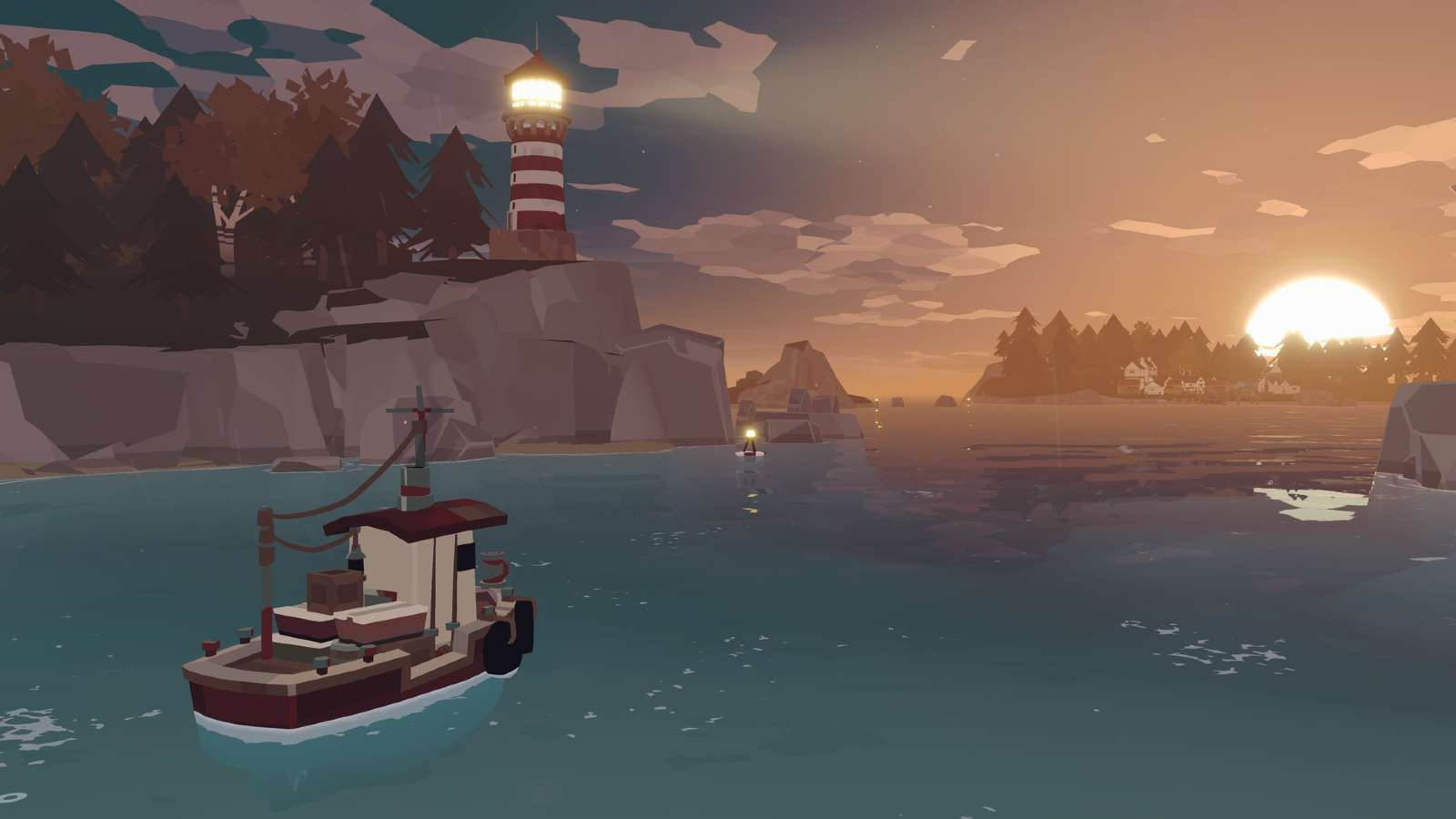 Black Salt Games
Black Salt GamesDredge hooks up a successful formula by mashing together elements of fishing games, RPGs, and horror greats for a delightful yet terrifying adventure.
There’s just something so spooky about the unknown; we aren’t really scared of what we know is out there, more so what we think is out there.
It’s probably one of the main reasons we think the ocean is so terrifying, as its depths know no bounds, and the deeper you go, the darker it gets. It’s this exact premise why games like Subnautica have been such a hit amongst audiences as, despite their fears, players keep coming back for more.
Indie title Dredge is able to carefully balance horror with its sense of exploration in much the same way. Black Salt Games have crafted a near-perfect experience that, pardon the pun, reels you in and keeps you on the hook for hours.
Dredge: Key Details
- Price: $25 USD/ £21.99/ $36.50 AUD
- Developer: Black Salt Games
- Release Date: 30th March 2023
- Platforms: PC (Steam), Xbox One, Xbox Series X | S, Nintendo Switch, Playstation 4, PlayStation 5
Dredge: Trailer
Voyaging through progression
On the surface, Dredge looks like a game where you go fishing on a boat, but it’s really far from just that. Rather, Dredge focuses far more on progression and exploration than the mere act of fishing itself.
With that said, it is indeed a fishing game at its core, so you will be spending a good chunk of time getting your hands dirty. Fortunately, fishing in Dredge is incredibly simple, players can move over to a spot and play a short mini-game to catch whatever the depths have in store. The mini-games aren’t complex either, only having the player hit a button at the right time to gain progress on reeling the fish in.
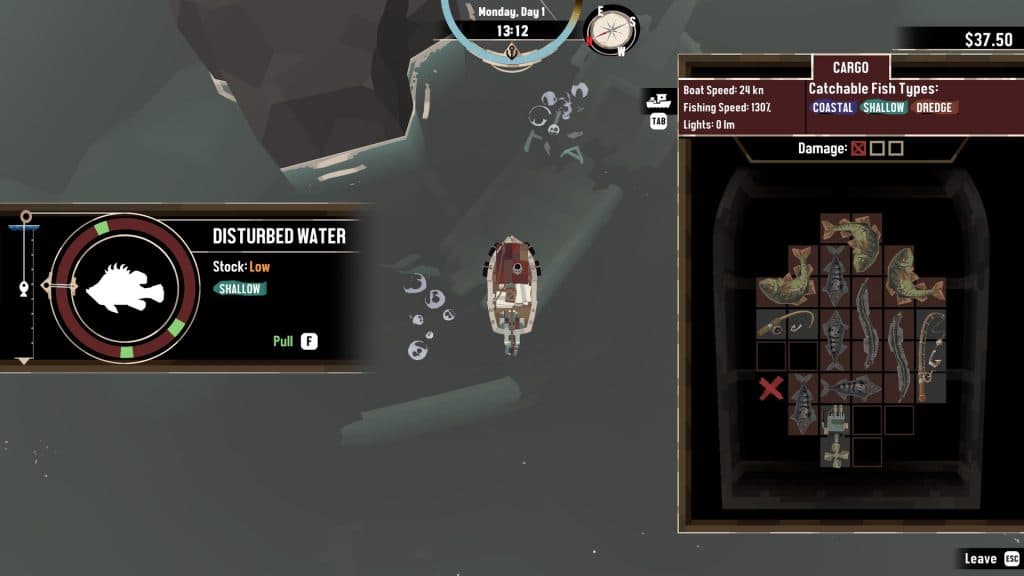 Black Salt Games
Black Salt GamesInstead, Dredge looks to have you explore its mysterious world, fishing up goods to upgrade your ship on repeat. As fishing spots can dry up due to your excessive catching, before long, you have to slowly venture further and further out from home base, looking for new species and gear to grab.
With gear and fish in tow, you then return to town and look to upgrade your ship and invest in research trees. Whilst the research and upgrade trees in Dredge aren’t wildly comprehensive, they act as a motivator to get players to explore and grab the pieces required for their next upgrade. It’s an endlessly charming cycle as you go in and out of town on a loop.
Smart, successful system design
Easily the most impressive part of Dredge pertains to the sheer amount of care and thought that went into its various systems. Black Salt Games really put a lot of consideration into how the game’s many pieces would function independently and collectively, making an incredible nuance and strategy in what would otherwise be a fairly straightforward affair.
Dredge takes inspiration from Resident Evil’s inventory management system, with items being of different shapes and sizes. Your ship has a limited amount of storage (this includes your lights, engine, and fishing equipment), so optimizing the placement of items in your inventory is key for getting the most out of a trip to sea. Whenever your ship takes damage, random inventory slots will be disabled, with the potential damage to any ship equipment inhibiting its usage until you go for repairs.
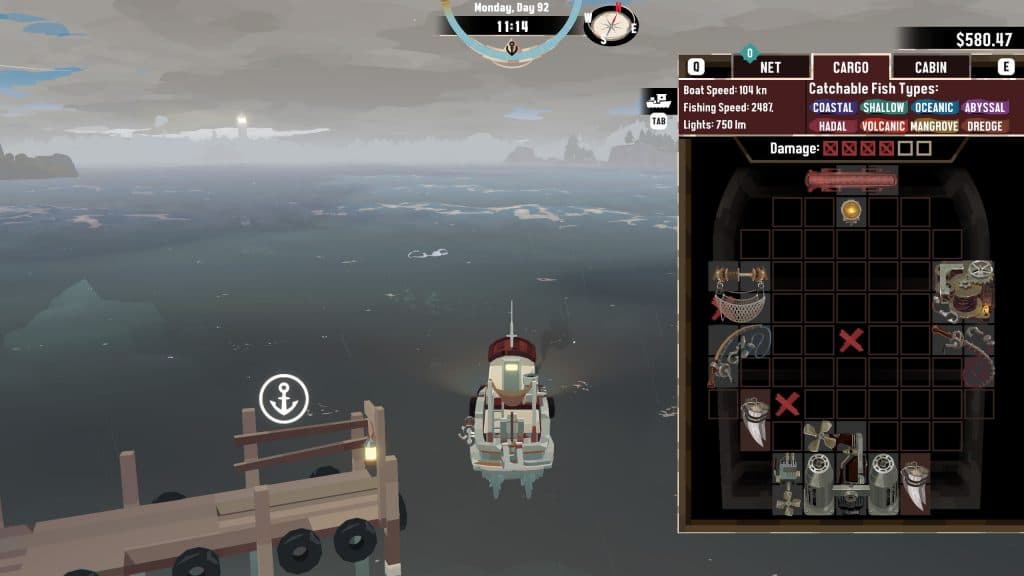 Black Salt Games
Black Salt GamesAnother fantastic core system of Dredge is how it handles the progression of time. Like normal, there’s a day and night cycle, each alternating one after the other. Time travels pretty fast in the game, meaning players need to think about what their plan is before heading out. Daytime is a much safer option than night, with increased visibility meaning fewer spooky things to shake you whilst you’re out fishing. However, only certain species of fish can be found at night, requiring players to head out when it’s dark.
Time doesn’t move in Dredge unless the player does, meaning you have plenty of time to strategize how to use your time. You’ll want to plan out your goals for each outing, as time can travel quickly in the game. This system works hand in hand with the fishing mini-games which causes time to pass as you complete them. Failing a check in a mini-game causes time to pass, making night swing round ever faster. As such, even the most minute of mini-games become incredibly important, as you won’t want to be left out in the dark.
An intriguing plot with a serviceable crew
Dredge’s main story sees the player dropped into a mysterious set of islands with nothing but water between them. Dredge doesn’t really do much in terms of laying out its story in plain terms. Instead, it provides a baseline mystery and an omen, demanding you explore the world to unravel more, at your own pace and peril.
NPCs in various towns and stops aren’t super memorable, however, they serve their purpose of giving quests and lore to the player along the way. None of them have many evolving plotlines to note, nor are their stories incredibly important in the grand scheme. It’s quite clear that they’re there to serve the world-building of the islands, and they do a serviceable job at just that.
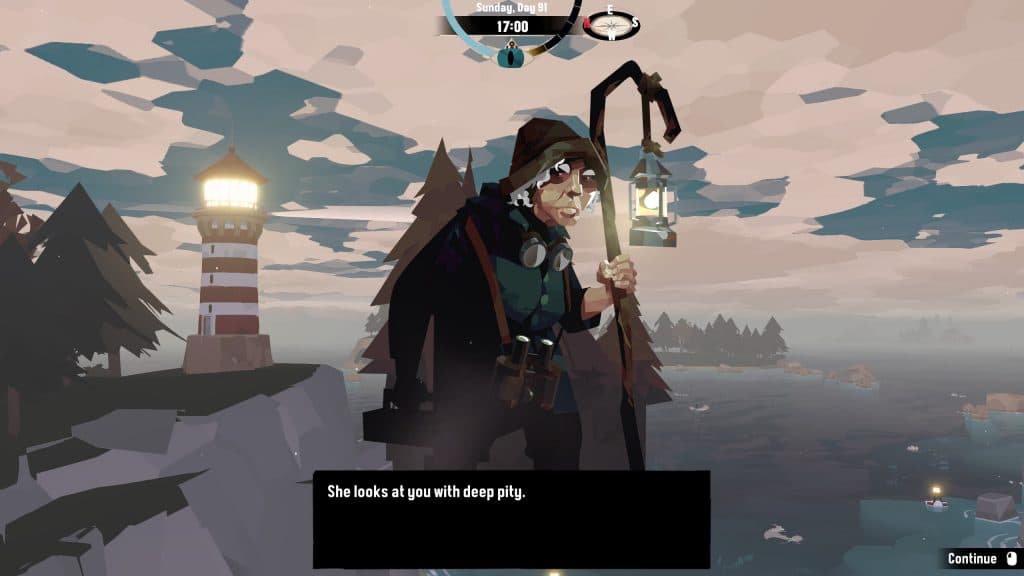 Black Salt Games
Black Salt GamesA dreary yet beautiful presentation
Dredge’s art style is a fantastic representation of the environment. Its lovely painted color effect gives the game an almost peaceful picturesque type of feeling, echoing the leisurely travels of fishermen on calm seas. There’s an almost calming effect on the player as they traverse through the sea, blue skies, and warm sunsets.
The art style is a double-edged sword, however, as it’s quickly turned on its head to represent the more creepy horrific aspects of the game. The usage of purples, reds, and greens pervading through the darkness all help to really freak you out as a player, stirring up panic as you quickly chug to safety.
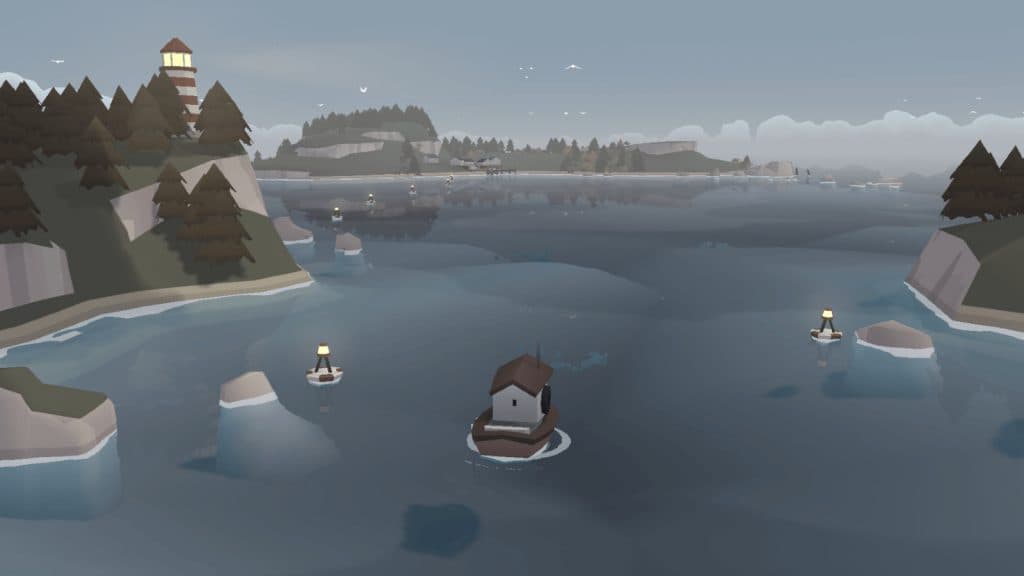 Black Salt Games
Black Salt GamesThe same can be said for Dredge’s soundscape and music, which are both equally important when it comes to building up that fear of the unknown. Dredge constantly throws various sound effects at the players, some good and some bad. It seemingly knows the perfect timing for a spooky noise, causing the player to survey their surroundings in fear of what lurks beneath them.
Dredge’s sound design also reflects its Lovecraftian creatures and surroundings, with players hearing louder and louder whispers as they battle with their own madness in the dark.
Verdict 4/5
It’s quite clear that Black Salt Games has made Dredge its lovechild, with the sheer amount of effort and thought put in place underneath the game’s surface. Every time a player interacts with something in the game, be it a fish, fisherman, or Eldritch monster, it feels purposeful and important, reflecting the hard work and attention from the devs.
As a small indie team hailing from New Zealand, Black Salt Games should be proud to release Dredge out into the sea, knowing full well that the game will keep people hooked in their own mysterious fishing adventure for hours on end.